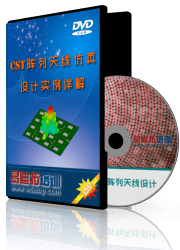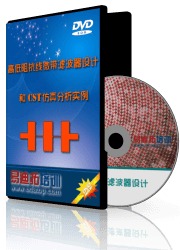- 易迪拓培训,专注于微波、射频、天线设计工程师的培养
CST2013: Signal Naming Conventions
The signals calculated by the CST MICROWAVE STUDIO are named by the following conventions:
The substitutes P, Q, M and N are integer values, representing two ports (P,Q) and their corresponding modes (M,N). The general excitation string <Excitation> is then given by the following expressions, depending on a sequential or simultaneous port excitation (please see the Port Mode Excitation Selection dialog for more information.):
Sequential excitation
<Excitation> = P(N) : excitation of the Nth mode of port P.
Simultaneous excitation
<Excitation> = P1(N1)[a1,p1],P2(N2)[a2,p2],...,[freq] : excitation of different port modes, combined with corresponding amplitudes and phase values (a,p) and finally the phase reference frequency (freq). The amplitude and phase values are referred to a reference signal with amplitude one (1/sqrt(watt)) and zero phase shift.
name | meaning |
”i<Excitation>” | The input time signal of the chosen excitation. |
”oQ(M)<Excitation>” | The output signal at port Q of mode M resulting from the chosen excitation. |
”aQ(M)<Excitation>” | The amplitude of the scattering parameter (linear scale) SQP of mode M resulting from the chosen excitation. |
”dQ(M)<Excitation>” | The amplitude of the scattering parameter (in decibel) SQP of mode M resulting from the chosen excitation. |
”pQ(M)<Excitation>” | The phase of the scattering parameter (linear scale) SQP of mode M resulting from the chosen excitation. |
All calculated Signals are stored in ASCII files. The names of these files are chosen according to the Result File Naming Conventions.
CST微波工作室培训课程套装,专家讲解,视频教学,帮助您快速学习掌握CST设计应用
上一篇:CST2013: Optimizer - Goals
下一篇:CST2013: Port Mode Information Sweep
CST中文视频培训教程 | More...
 最全面、最专业的CST微波工作室视频培训课程,可以帮助您从零开始,全面系统学习CST的设计应用【More..】
最全面、最专业的CST微波工作室视频培训课程,可以帮助您从零开始,全面系统学习CST的设计应用【More..】
频道总排行
- CST2013: Mesh Problem Handling
- CST2013: Field Source Overview
- CST2013: Discrete Port Overview
- CST2013: Sources and Boundary C
- CST2013: Multipin Port Overview
- CST2013: Farfield Overview
- CST2013: Waveguide Port
- CST2013: Frequency Domain Solver
- CST2013: Import ODB++ Files
- CST2013: Settings for Floquet B











 沪公网安备 31011202014168号
沪公网安备 31011202014168号
 1427313829
1427313829 旺旺在线
旺旺在线 Skype Online
Skype Online 13761612886
13761612886 官方淘宝店
官方淘宝店
